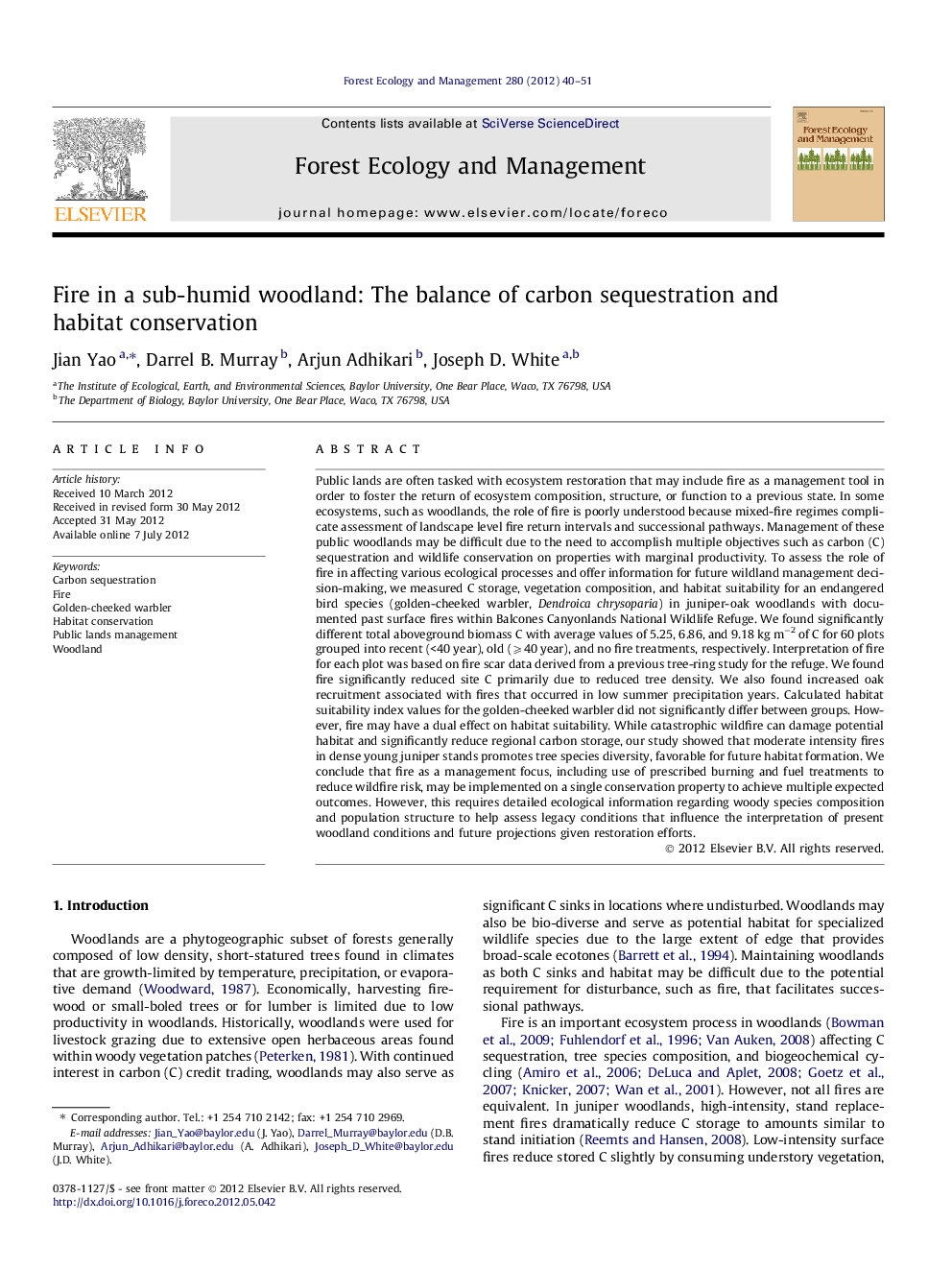| کد مقاله | کد نشریه | سال انتشار | مقاله انگلیسی | نسخه تمام متن |
|---|---|---|---|---|
| 87354 | 159247 | 2012 | 12 صفحه PDF | دانلود رایگان |

Public lands are often tasked with ecosystem restoration that may include fire as a management tool in order to foster the return of ecosystem composition, structure, or function to a previous state. In some ecosystems, such as woodlands, the role of fire is poorly understood because mixed-fire regimes complicate assessment of landscape level fire return intervals and successional pathways. Management of these public woodlands may be difficult due to the need to accomplish multiple objectives such as carbon (C) sequestration and wildlife conservation on properties with marginal productivity. To assess the role of fire in affecting various ecological processes and offer information for future wildland management decision-making, we measured C storage, vegetation composition, and habitat suitability for an endangered bird species (golden-cheeked warbler, Dendroica chrysoparia) in juniper-oak woodlands with documented past surface fires within Balcones Canyonlands National Wildlife Refuge. We found significantly different total aboveground biomass C with average values of 5.25, 6.86, and 9.18 kg m−2 of C for 60 plots grouped into recent (<40 year), old (⩾40 year), and no fire treatments, respectively. Interpretation of fire for each plot was based on fire scar data derived from a previous tree-ring study for the refuge. We found fire significantly reduced site C primarily due to reduced tree density. We also found increased oak recruitment associated with fires that occurred in low summer precipitation years. Calculated habitat suitability index values for the golden-cheeked warbler did not significantly differ between groups. However, fire may have a dual effect on habitat suitability. While catastrophic wildfire can damage potential habitat and significantly reduce regional carbon storage, our study showed that moderate intensity fires in dense young juniper stands promotes tree species diversity, favorable for future habitat formation. We conclude that fire as a management focus, including use of prescribed burning and fuel treatments to reduce wildfire risk, may be implemented on a single conservation property to achieve multiple expected outcomes. However, this requires detailed ecological information regarding woody species composition and population structure to help assess legacy conditions that influence the interpretation of present woodland conditions and future projections given restoration efforts.
► We studied the past fire effects on carbon, composition, and bird habitat in woodlands.
► Woodland carbon can be reduced by fire, but recovers quickly.
► Fire reduces tree density, but helps to promote oak species recruitment.
► Reintroducing surface fire may restore habitats for the golden-checked warbler.
► Historical influences in woodlands require careful planning for fire management.
Journal: Forest Ecology and Management - Volume 280, 15 September 2012, Pages 40–51